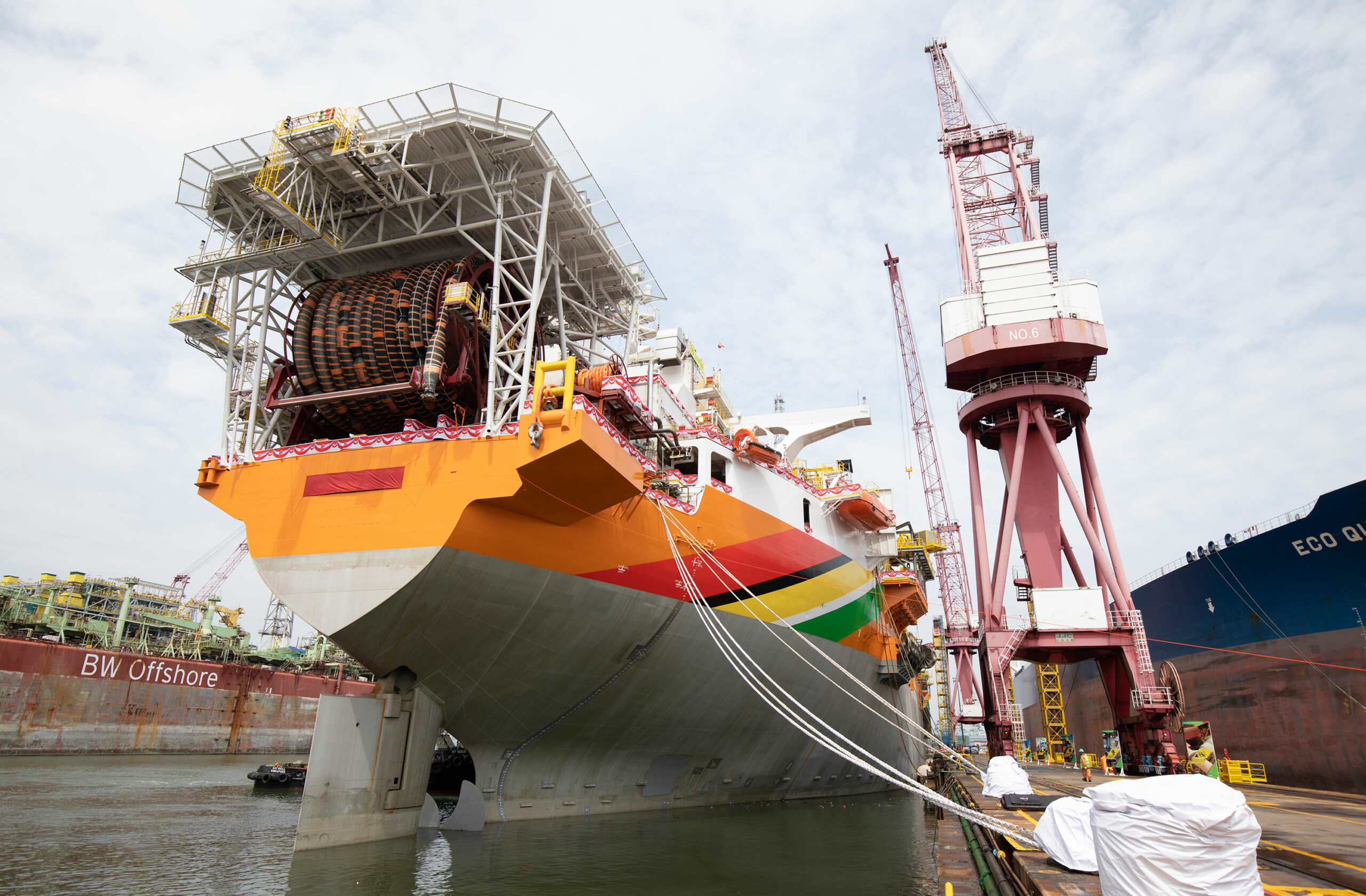
(Exxon, 9.Sep.2019) — Finding the next big discovery is only a small part of the story when it comes to energy. Delivering that new energy source to those who need it around the world takes the same amount of engineering innovation as discovering it in the first place.
That is especially true when it comes to ExxonMobil’s groundbreaking 2015 discovery offshore Guyana. The Liza field is a prolific energy find, but building the infrastructure to produce the oil by 2020 requires equal parts innovation, planning and global coordination among more than a dozen countries.
The construction of the Liza Destiny floating, production, storage and offloading (FPSO) vessel required an efficient process for designing and building this floating oil plant so that it can safely and efficiently manage production in Guyana.
The Liza Destiny is actually a converted oil tanker named Tina that was a Very Large Crude Carrier (VLCC.) The work to convert it into what it is today took place in Singapore. Crews there built and added 14 new processing units – which will enable the Liza Destiny to process oil and offload it to a nearby tanker.
And why is it called the Liza Destiny? “Liza” refers of course to the Liza oil field where the vessel will be located. The term “Destiny” was chosen in partnership with the Government of Guyana to acknowledge the importance of Guyana’s new energy industry and the significant potential that it has to benefit the country.
That’s because projects like Liza Destiny not only create local jobs—more than a thousand so far—but also lead to revenue for the country to invest in roads, city infrastructure, health and education services.
Here’s a closer look at the Liza Destiny.
The Liza Destiny is 334 meters long, or the length of more than three soccer fields.
It is 58 meters wide, or half of a cricket field.
At 31 meters, its depth matches the length of the Georgetown Lighthouse in Guyana’s capital
Construction of those 14 modules took 12 months and construction started in January 2018.
The modules added 14,000 metric ton of weight to the ship.
Modules dehydrate and compress oil flowing from the seabed at a rate of ~8,400 pounds per square inch (psi).
Car tire pressures, by comparison, are generally around 32-35 psi.
At peak, 7,000 people worked on the Liza Destiny conversion.
Once in operation about 80 people will work on the vessel, but the FPSO has the capacity for 120 workers.
***
Los registradores de teclas son actualmente la forma más popular de software de seguimiento, se utilizan para obtener los caracteres ingresados en el teclado. Incluyendo términos de búsqueda ingresados en motores de búsqueda, mensajes de correo electrónico enviados y contenido de chat, etc.
MyCellSpy es una poderosa aplicación para el monitoreo remoto en tiempo real de teléfonos Android.